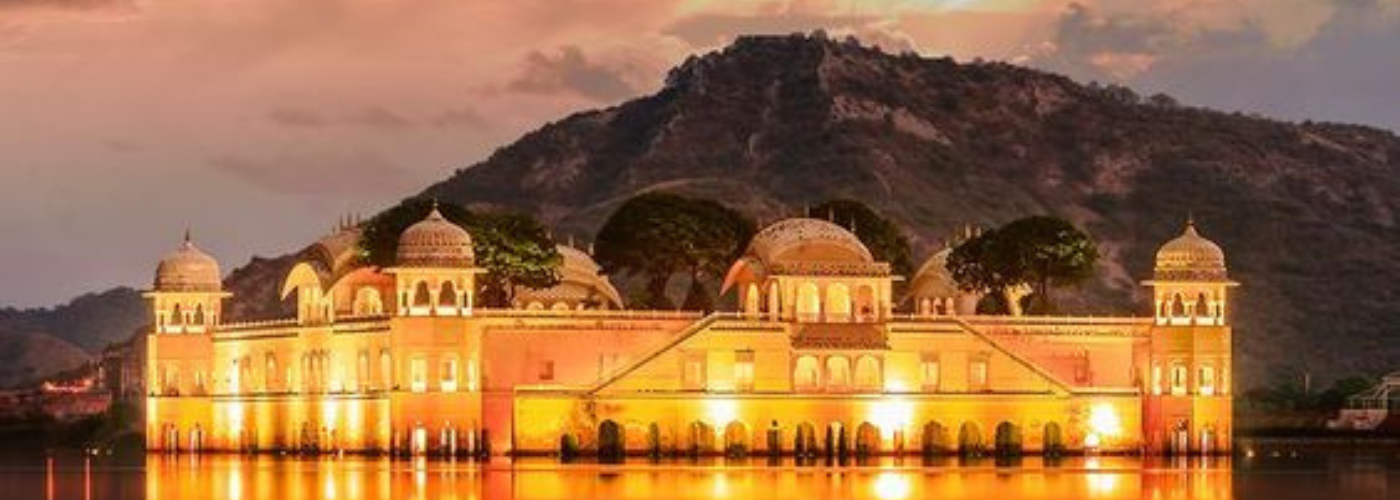

Albert Hall Museum: A Timeless Treasure in Jaipur
Located in the heart of Jaipur, the Albert Hall Museum stands as a testament to the city’s rich cultural and artistic heritage. As the oldest museum in Rajasthan, Albert Hall is a remarkable blend of Indo-Saracenic architecture and a treasure trove of artifacts that offer glimpses into India’s diverse history. Completed in 1887, this museum was named after Prince Albert of England and has since become one of the city’s most iconic landmarks.
Architectural Splendor
The architecture of Albert Hall Museum is a perfect amalgamation of Rajput, Mughal, and European styles, reflecting Jaipur’s historical influences. The museum’s majestic façade, adorned with arches, domes, and intricate jharokhas (windows), is a work of art in itself. Designed by Sir Samuel Swinton Jacob, it was initially intended as a town hall. However, under the reign of Maharaja Sawai Ram Singh II, it was decided that the building would serve as a museum, showcasing the art and culture of Jaipur.
The museum is surrounded by the lush Ram Niwas Garden, offering visitors a serene environment to enjoy the grandeur of this architectural marvel. At night, the building is beautifully lit, making it a picturesque sight against Jaipur’s skyline.
A Curated Collection of Art and History
Albert Hall Museum boasts an extensive collection of artifacts from all over the world. The galleries are home to a variety of exhibits, including sculptures, paintings, pottery, jewelry, textiles, musical instruments, and much more.
Among the most fascinating displays are the museum’s Egyptian artifacts, including a rare and fully preserved mummy that dates back to ancient times. This unique exhibit often draws the attention of visitors, as it is one of the few mummies on display in India.
The museum also houses a stunning collection of Rajasthani miniature paintings, which reflect the fine craftsmanship of local artists. These intricate paintings depict various scenes from Indian mythology, royal courts, and everyday life in Rajasthan.
One of the standout sections of the museum is the Arms and Armor gallery, featuring an impressive array of Rajput weapons such as swords, shields, and daggers. These items tell the story of Rajasthan’s martial history and the bravery of its warriors.
A Cultural Legacy
The Albert Hall Museum not only showcases art but also preserves Jaipur’s cultural legacy. Visitors can explore textiles and clothing from Rajasthan, including traditional garments adorned with intricate embroidery and vibrant colors. The museum’s collection of blue pottery, a craft unique to Jaipur, is another highlight. This delicate form of pottery is known for its vivid blue and white patterns and is still a prominent part of Jaipur’s artistic identity.
In addition to art and artifacts, the museum often hosts exhibitions, cultural performances, and workshops, contributing to the city’s thriving cultural scene.
A Must-Visit for History Enthusiasts
The Albert Hall Museum is a must-visit for anyone who wants to delve deep into Jaipur’s history and artistic heritage. The museum not only provides a window into the region’s rich past but also showcases influences from across the globe. Its well-curated exhibits, combined with its stunning architecture, make it one of the most unique and enriching experiences in Jaipur.

Jal Mahal: Jaipur’s Enchanting Palace on Water
Set like a jewel in the midst of the serene Man Sagar Lake, Jal Mahal (meaning “Water Palace”) is one of Jaipur’s most captivating and picturesque landmarks. With its unique location, half-submerged in water, Jal Mahal exudes a tranquil beauty that sets it apart from other royal palaces. Built over 200 years ago, this architectural marvel remains a stunning example of Rajput and Mughal craftsmanship, offering visitors a glimpse of Jaipur’s royal past.
A Palace in the Middle of a Lake
Jal Mahal was constructed in the 18th century by Maharaja Madho Singh I as a royal retreat and hunting lodge. Initially built for duck hunting and royal picnics, the palace quickly became a favorite escape for the royals. Despite being a modest five-story structure, only the top floor of Jal Mahal is visible, while the four lower levels remain submerged in the lake during most of the year, creating the illusion of a floating palace.
The architecture of Jal Mahal combines Rajput and Mughal styles, with delicate jharokhas (balconies), chhatris (domed pavilions), and intricate latticework. The palace’s design harmonizes perfectly with its surroundings, giving it a serene and almost magical aura.
Restoring the Beauty
Over the centuries, Jal Mahal experienced wear and tear, particularly because of its location in the water. However, in the early 21st century, a major restoration project was undertaken to revive the palace’s grandeur. The restoration efforts not only focused on the palace but also on improving the ecological health of Man Sagar Lake, ensuring that the area remains a beautiful and sustainable habitat for local wildlife, especially migratory birds.
Today, Jal Mahal stands as a symbol of resilience, with its elegant facade reflecting beautifully in the lake’s clear waters.
A Birdwatcher’s Paradise
Jal Mahal’s location in the heart of Man Sagar Lake makes it an ideal spot for birdwatchers. The lake and its surrounding area have become a sanctuary for a variety of migratory birds, including flamingos, pelicans, herons, and kingfishers. The peaceful ambiance and lush surroundings make it a perfect retreat for nature lovers.
The palace is accessible only by boat, and while visitors cannot enter the palace itself, boat rides around the lake offer spectacular views of the palace and a chance to enjoy the tranquil environment.
The Perfect Spot for Photography
Jal Mahal is a photographer’s paradise. Whether at sunrise or sunset, the palace’s reflection on the still waters of the lake creates a mesmerizing sight. The Aravalli Hills provide a stunning backdrop, enhancing the beauty of the scene. The palace is especially breathtaking when illuminated at night, casting a golden glow across the water.
For those seeking to capture the essence of Jaipur, a visit to Jal Mahal is a must. Its combination of natural beauty and architectural splendor provides the perfect opportunity for unforgettable photos.